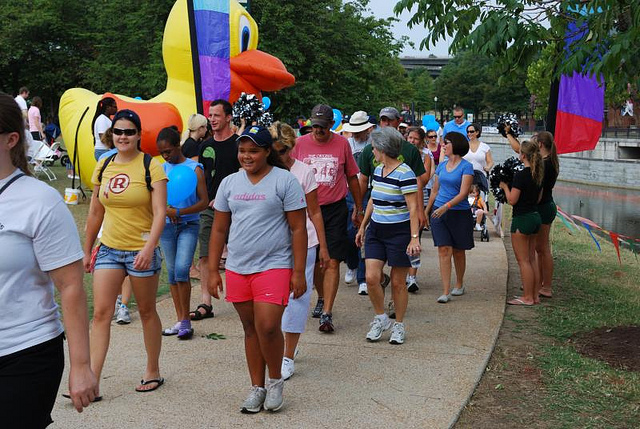
I bet like me you’re already looking forward to the summer months. And if you’re a fundraiser, that can only mean one thing: summer events. I bet you’re already thinking about trying your hand at a charity walk, ride, or run.
Please, please think again.
Our communities are being overrun by charity walks, bike rides, races and other special events that shut down roads and clog city streets. My hometown of Boston is just one of the cities that’s booked every weekend from May to October with traffic-stopping outdoor fundraisers.
But Boston and other cities are cracking down by limiting the number of events and by asking charities to pay for things like police details and trash removal.
The problem is too many nonprofits and not enough donors.
But there’s another reason for the glut of outdoor events: just plain silliness (to put it nicely). Fundraisers have chased the “-athon” craze without any forethought on how it will generate visibility, engage donors, or raise money.
Take the traditional cause walk. Despite an almost 100 percent saturation in every major American city, charities continue to pour their time, energy and money into walks that get no exposure (try calling your local newspaper editor with the “news” that you’re having a walk), supporters hate (“Not another walk!”), and raise nothing (friend-raiser).
The next time someone in your office wants to do a charity walk—or any other special event for that matter—ask him to weigh the following.
Who will support it?
Anyone who works in development knows that anything is possible when you have the right people involved. But how often do we have a “build it they will come” attitude? It should be the other way around: “They will come, let’s build it!”
Will it be staff-driven or volunteer-driven?
A hospital here in Boston boasts 100 annual golf tournament fundraisers. Collectively, they raise over $7 million when I last checked. Do you know how many are staff run? None. The reason they can have so many tournaments is because they have volunteers running them. When possible, you should too. If not, make sure you have the right staff with the right skills to get the job done.
Is the event mission-driven or concept-driven?
Mission-driven events appeal to donors and friends who want to feed the homeless, cure cancer, save the whales, etc. The event is secondary to supporting the cause. Concept-driven events appeal to people that want to shop in a specific area, run a particular race, attend a concert, take their kids to a Halloween party, etc. People come out because they enjoy the activity, but they also get exposed to your organization. Knowing what drives your event will aid your planning and marketing.
What’s the event’s competitive edge?
Give me three reasons why your event will succeed. If it’s a charity walk, maybe it’s because you have a hard-working committee, a major sponsor teed up and someone who can donate incentives and supplies, like t-shirts. Now those are assets you can take to the bank.
How will it grow?
Create a business plan for the event that shows how it will evolve from year to year and become a signature event for your organization. Estimate what the potential is, and what it will demand of your organization.
If you don’t have good answers to most of these questions, do yourself and everyone else a favor: don’t do it.